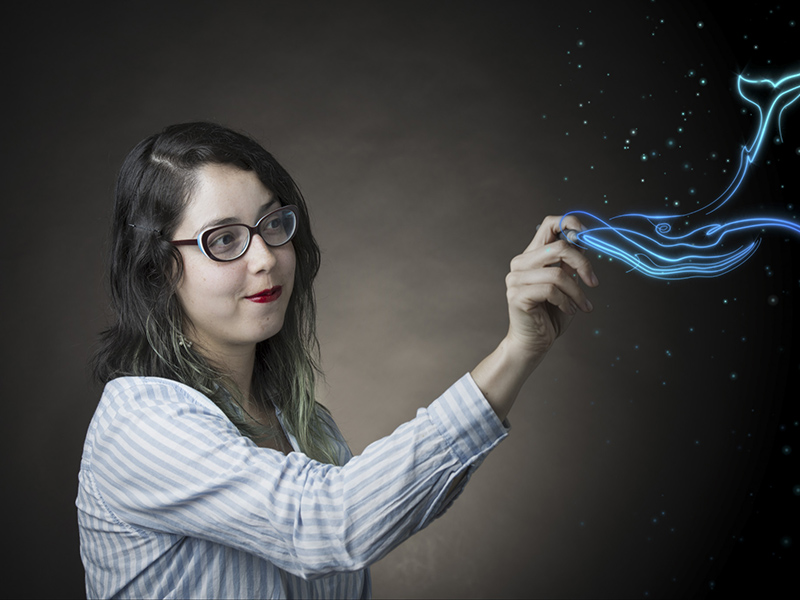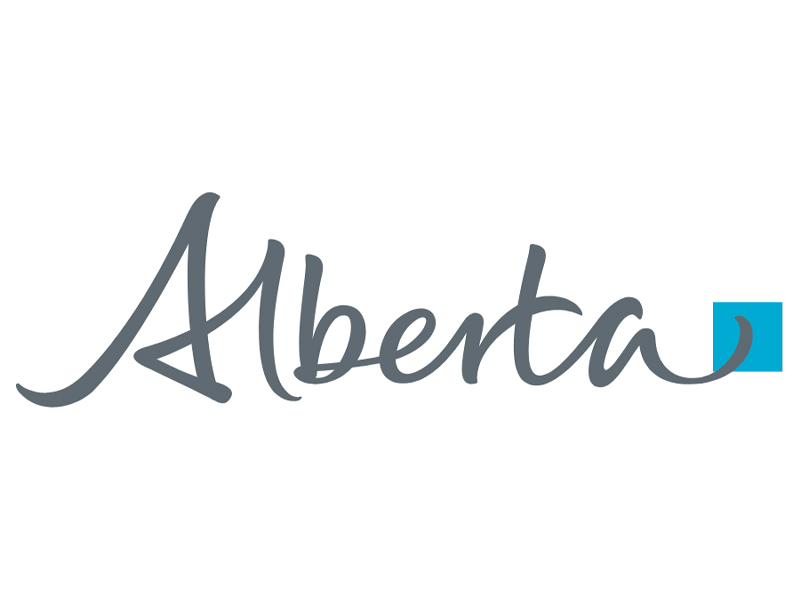Laura Anzola
Month of the Artist celebrates the valuable contributions artists make to Alberta
Laura Anzola has always been fascinated with images: how they work, how they are captured and composed, and how people react to them. This fascination led her to work with visual arts.
Anzola is an artist based in Calgary working with animation, new media arts, and design. She conducts her work with an attention to detail and focus on the process of image making and visual composition. She explores many different animation and projection techniques, ranging from traditional animation styles to live interactive video.
Throughout her practice she has maintained an interest in how technology and arts can work together. This curiosity and enthusiasm has led her to do many projects that explore the influence of technology and media on our daily lives, our bodies, and recently, questioning their impact on physical and geographical borders.
She aspires to create unique audience experiences that inflect and alter how we perceive the world, while bringing to light contemporary issues that affect others and myself around the globe.
Follow her on Instagram at @iridescent_whale and @azmadigital, and learn more at lauraanzola.com.
How do you describe yourself as an artist?
I am an artist who uses new media technology to explore contemporary issues that I think are important to myself and the people around me. I work primarily with computer manipulated moving images in the form of digital and analog animation that can be fixed or interactive.
I have always been interested in presenting my images in a way that is engaging and non-conventional—generally outside of the 16:9 screen. Over the years I’ve explored many ways to do this: integrating video into mannequin bodies, hacking CRT televisions, exploring augmented reality, projecting onto buildings and sculpture objects, and most recently, exploring dome projection for my upcoming work Blue Borders.
I approach technology with a cautious optimism because I am aware of its potential as both a tool of creativity and of oppression. This love-hate relationship leads me to approach technology as a malleable tool that I can re-appropriate for my own practice.
As a newcomer to Canada (via Colombia and Germany), my art reflects my place in the world and the experiences I have had. In that sense, my work could be described as both personal and political in that it addresses issues of identity, equality, mobility, and my sense of home and belonging.
I want to make work that is both visually stunning and full of meaning. This is something I have been refining over the years, and I owe a lot to my education and the instructors who helped me build my skills of observation and composition and who encouraged me to think visually and focus on detail.
I think art is a gift and being an artist is a responsibility that I take very seriously.
What does living a creative life mean to you?
I genuinely believe that we are all creative people with something to offer the world. You don’t have to call yourself an artist to be creative. Unfortunately, the idea of creativity is often undervalued or discouraged—especially if it challenges an established system or point of view.
Choosing to be an artist and attempting to make a living through art is quite hard and comes with a lot of responsibility. Not only do you have to conceive of creative ideas that resonate on both conceptual and aesthetic levels, you also have to manage yourself like you would a business including all the accounting, funding, budgeting, promotion, administration, install, documentation, etc.
I often feel like I am doing the work of four or five people. The stereotype of the artist as the daydreaming creative who puts in a few hours of work and then drinks wine and socializes the rest of the time does not apply to most artists, and certainly does not apply to me. This stereotype is unfortunate because it presents artists as lazy or just floating around in their heads. If anyone thinks this, I encourage them to come work with me for a day!
What do you love about Calgary and what is one place you go to find inspiration in Calgary?
I am still fairly new to the city, I moved here in June 2018, so I am still learning how to navigate and love Calgary. I am grateful for the challenges and opportunities Calgary has offered me to establish myself as an artist and for the role it has played in my personal growth.
I really enjoy the Esker Foundation and I find their exhibitions very inspiring. I also enjoy walking near the river and absolutely adore seeing the baby geese every spring and watching them grow. World cinema has been a constant source of inspiration for me. I love going by myself to the movies, no popcorn, I just immerse myself in the darkness and focus on the movie. There are so many great festivals here like CUFF, CIFF, and GIRAF. CJSW is also such a wonderful resource that Calgary should be proud of.
I love my partner Matthew and how his family has received me in their home. Their kindness and generosity are a constant source of inspiration, (and their dog Charlie is so sweet!).
If you could do one thing this year to make Calgary a better place to live, what would it be?
I believe Calgary needs to embrace art more, support it and believe in its value for society. This is especially true during the pandemic. I have been dreaming for a while of transforming one of the many empty office buildings downtown into creative studios and installation spaces. This is much easier said than done, but I think that would be amazing. I think it is very important to expose people to art in unconventional ways. Image working downtown and being able to take a break in an inspiring environment!
What piece of advice would you give to an emerging artist?
Incorporate feedback into your practice. I find people often don’t speak their mind about art because they are scared of coming across as snobby or impolite. Feedback is so important though because it allows us to elevate our work and understand how our message and techniques are being interpreted from another point of view.
Invite your friends or people you respect to comment on your work. Don’t be scared to be hurt. Nurture and refine the way you talk about other works as well as your own so that you can offer constructive criticism. Be polite but honest.
What are you currently working on?
After a long pandemic related hiatus, I now have a few exciting projects on the go for the fall and new year. The project I am most excited about is Blue Borders, an audiovisual performative essay for a simulated floating audience that uses dome projection and theatrical elements to explore ideas of immigration, belonging and borders.
I am working with Ghost River Theatre on this and it will be finished next year. I have a collective with my partner Matthew Waddell called Axis Z Media Arts (AZMA). We are working with the Victoria Park Business Association on a month-long projection mapping project on the 1200 block of 1 Street SW that will run during the month of October.
We have also been invited to teach a fall course at the University of Calgary in the School of Architecture, Planning and Landscape. Matt and I are also working on a project relating to technology and patents that we started during the Collider Residency at Contemporary Calgary.
Lastly, I am working on being more kind to myself and accepting mistakes as a source of growth.
About Alberta’s Month of the Artist
September is the Month of the Artist in Alberta, an annual celebration of artists and the value they bring to the province, both socially and economically.
Dedicated by the Government of Alberta, the Month of the Artist is a way to say thank you for making the province a better place to live.
Calgary Arts Development is pleased to share the stories of artists who choose to live and work in Calgary.
Have a story to share? Email us at submissions@calgaryartsdevelopment.com.

